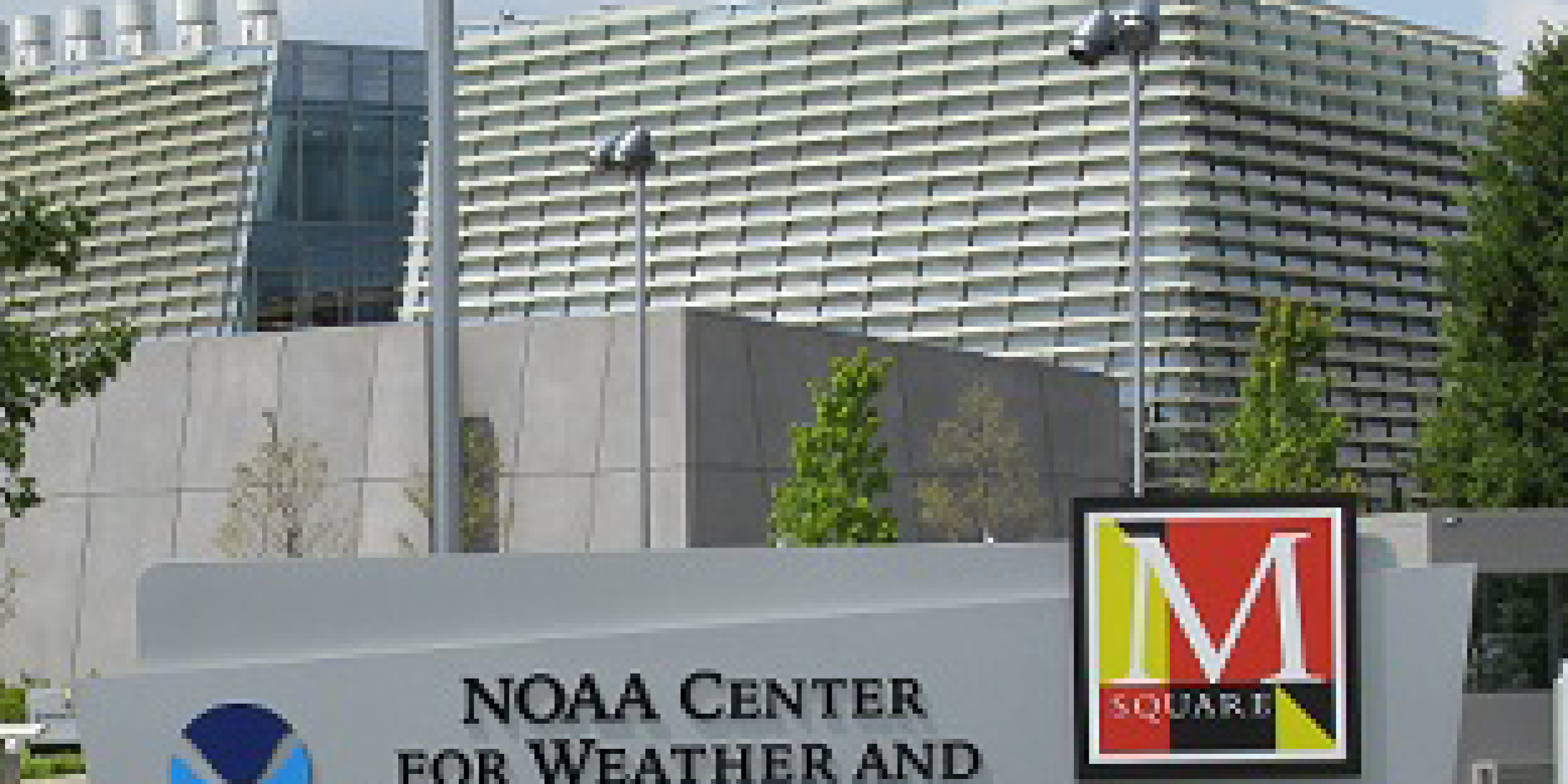

NOAA Center for Weather and Climate Prediction, College Park, Md. September 2012. (Credit: University of Maryland)
Two primary NOAA weather and climate modeling programs hosted a joint meeting to assess progress on funded projects that aim to improve the way NOAA develops and operates models. Co-organized by the OAR Modeling, Analysis, Predictions, and Projections (MAPP) Program and the NWS Next Generation Global Prediction System (NGGPS) Program, the meeting topics allowed participants to discuss projects relevant to modeling and prediction elements featured in the recently published NOAA Unified Modeling Task Force report, which highlights recommendations towards a more coordinated approach to advance NOAA’s weather to climate modeling efforts.
Christopher Hedge, Physical Scientist in the NWS Modeling Program Division, noted that the NGGPS-MAPP partnership began about 2 years ago to improve subseasonal forecasts, which are predictions made in the space between short-term weather and seasonal timescales. This has remained a challenging prediction gap, but scientists have found promising new sources of potential predictability to improve forecast skill. Direct collaboration between the programs fosters a faster and more seamless transition of funded research towards developing NOAA’s next-generation global forecast system, which aims to unify weather and seasonal prediction.
“It’s advantageous for us to coordinate what we do, align it, and make sure the funding is aligned,” said Fred Toepfer, director of the NWS Modeling Program Division, regarding the NGGPS-MAPP partnership.
Over the last two years, the NGGPS program has held this meeting with their researchers while the MAPP Program met monthly as part of the Climate Model Development Task Force. This is the first time the programs have brought their investigators together. The joint meeting highlighted the importance of MAPP’s role in model development at NWS. “We want all the [investigators] to find out what we’re doing… Sometimes you get cross fertilization of ideas and things like that,” said Toepfer. “When they are listening to each other, then they can see how they can work together.”
During her meeting presentation, Annarita Mariotti, Director of the MAPP Program, noted how joint meetings and other coordination between weather and climate programs directly supports NOAA’s unified modeling initiative.
The goals of the meeting were to enhance awareness of the MAPP and NGGPS projects and better engage the external community with NOAA modeling staff. “The researchers have a lot of experience and different perspectives…Bringing their work in can really help influence the development of a unified global modeling system,” said Hedge regarding the importance of the external community.
Investigators included Ben Kirtman, University of Miami professor, whose talk discussed the Subseasonal Experiment (SubX), a project combining multiple forecast models to improve weather outlooks 3-4 weeks in advance. He and other attendees recognized the value of the joint meeting. “I think what we learn from SubX can be used to make [NOAA’s next-generation global modeling system] a better prediction system,” said Kirtman. “So that’s where I think the real advantage is.”
The Joint NGGPS-MAPP Principal Investigators meeting was held August 2-3 at NOAA’s National Center for Weather and Climate Prediction in College Park, Maryland.
For more information about the meeting, go to: https://www.weather.gov/sti/stimodeling_nggps_presentations



